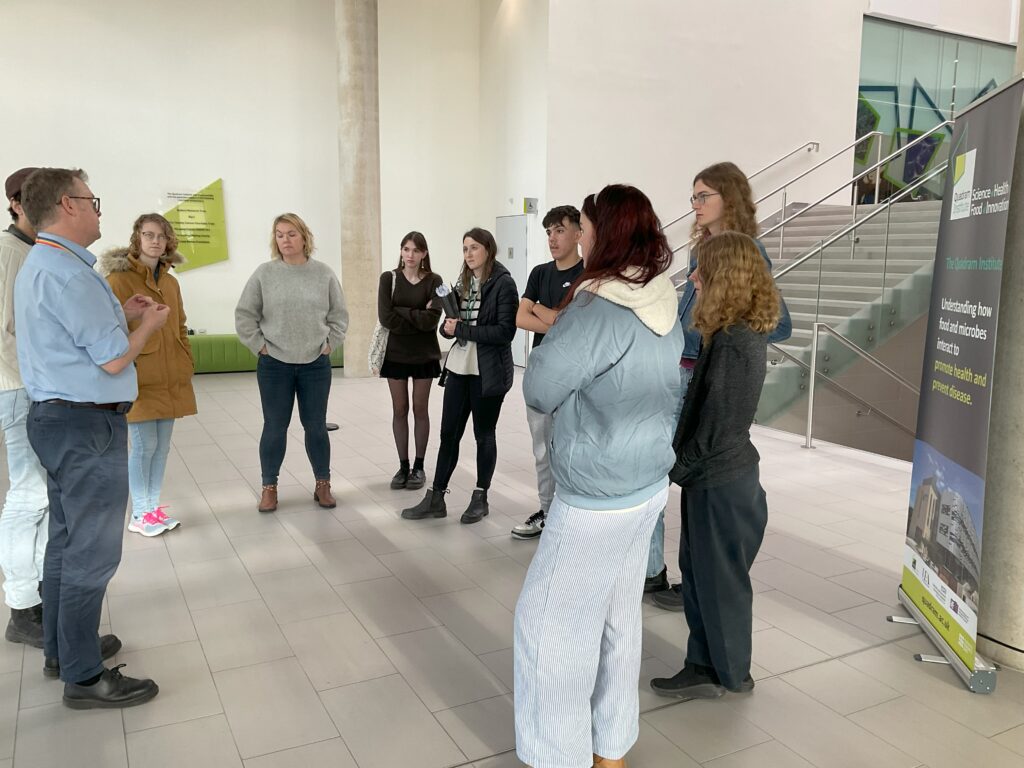Young Curators – School dinners, lunch hall environments and international memories
We started running our first Young Curators programme in October 2024, in partnership with the Museum of the Home, Quadram Institute, the School Meals Project, and Chefs in Schools. Designed to give young people hands-on experience in museums, participants aged 15-18 years old collaborated with museum professionals, academics, and food experts to conduct research that will contribute to our upcoming School Dinners exhibition. You can read more about their October residential trip here.
In our latest blog update, one of our Young Curators, Sidney, explores different experiences of school food in America and England.
Over the past few months I’ve been researching for the School Dinners project at the Food Museum through the young curators program. I decided to focus my research mostly on how school dinners change around the world and the differences that come with that. I was also interested in the atmosphere and environments of mealtimes at school and how those affect people’s opinions. I did this research through a survey of my peers’ thoughts and two oral histories, both of which had knowledge of school dinners in other places so I could find out more about school dinners internationally.
Many people had very strong opinions on the actual meals given to them at school. Although I found there was a minority of people who actually enjoyed them. However, almost everyone still had stand out examples of favourite school dinners (as well as examples of school dinners they hated). There was also a lot of overlap with favourite and least favourite meals suggesting the discontent could just be different tastes and palates rather than the fault of the meal; it’s hard to make a meal hundreds of people will all like. Their favourites did also contrast their desires for healthy nutritious food and seem to ignore their complaints at the lack of nutrition in current school meals, showing priorities over taste held by students. Furthermore, there was a repeated frustration with portion size suggesting that many students don’t think they are given a substantial amount of food at lunchtime. These reasons lead many people to believe packed lunches are the better option (71% of people in my survey) although the vast majority still got school meals for accessibility and ease. Students thought packed lunches were more nutritious and were more enjoyable to eat than the sometimes unpleasant meals at school they usually settled for.
I also looked into the range of environments found in different schools. For example, in America the layout was more controlled than the UK; an elementary school there made students eat with the same people all year and had a specific nut free table for people with nut allergies. Similarly, most people here stick to the same table and people every day but it is still subject to change once in a while. In general, people saw the lunch halls and mealtimes at school as chaotic and loud, especially the queuing. This can be good though as it can act as mixing grounds for all cliques and ages. This can be overstimulating for some people or in contrast be a quite fun, lively atmosphere for others. People also had a very positive opinion on their dinner staff despite the negative opinions on the food; they saw them as ‘friendly’ and some people had built up relationships with them.
There were lots of specific memories that people had from school meals, showing how important and significant school dinners are; these were both positive and negative. There were traditions such as the annual Christmas dinner meal which is such a staple in British school culture; this was a culture shock to a person coming from Brookline as in America there wasn’t as much of a celebration for Christmas and all they had was a themed sugar cookie instead. Students also made traditions during lunchtimes; it was common to sing happy birthday to friends in the lunch halls loudly and have everyone join in. There were also negative memories. One example was in primary school where a food fight ended in students having to scoop up baked beans with their bare hands off the floor as punishment.
Overall, people’s opinions on school mealtimes were shaped more on the experiences than the meals themselves. People also seemed to have more positive opinions overall on their memories than just the food they ate.
It has all been a really great experience that has taught me a lot and I’m so glad I have gotten to take part.

Share this article



